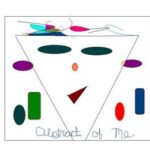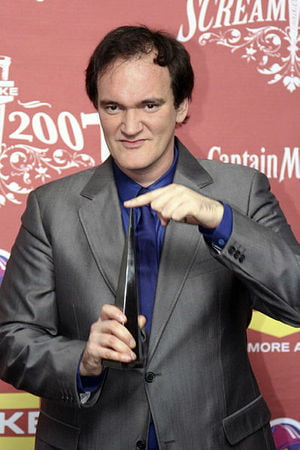The term absolute music causes much debate and confusion in music circles, at least partly because the word absolute, which suggests rigidity or detachment from external references, seems out of place in an art whose effectiveness depends so heavily on individual interpretations, not only those of performers but also those of listeners.
Absolute music is usually discussed in contrast with program music.
Absolute Music
Absolute music (or abstract music) is music that is free of overt extramusical implications. Its comprehension depends solely on its musical structures, not on any narrative, pictorial, or other nonmusical ideas.
Absolute music typically is identified not by a descriptive title but by the name of a musical form, such as symphony, sonata, quartet, concerto, invention, toccata, or fugue. The term usually excludes vocal music because the text itself provides, in varying degrees, a program.
However, even in absolute music, the interplay of consonance and dissonance, rising and falling pitches, bright and dark timbres, and so on may evoke all sorts of pictorial images and emotional responses within individual composers, performers, and listeners, even though such associations are nowhere stated in the music itself. For each person, those associations will probably be different, conceivably even radically different.
Absolute, then, is a “relative” term. It refers not to the absence of images and emotions but to the absence of stated images and emotions.
Program Music
Program music is music overtly inspired by a nonmusical idea, which is usually indicated in the title and sometimes by introductory remarks or even running comments in the score. Because vocal music with a text (not just vocalizations) has a built-in program, musicians and commentators have long used the term program music primarily with specific reference to instrumental music, not vocal music.
Program music has been around for hundreds of years. A well-known early example is Antonio Vivaldi’s The Four Seasons, the first four concertos of his Opus 8 (1725). The concertos are based on descriptive sonnets, one each for spring, summer, autumn, and winter.
Program music reached its greatest prominence during the Romantic era of the 19th century. The aesthetic of the time regarded instrumental music as the supremely Romantic mode of expression because, unlike the other arts, it was free to explore the entire range of emotions unencumbered by words or material objects.
Therefore, the composers of that period especially cultivated program music: instrumental music associated with poetic, descriptive, or narrative subject matter.
Often the “program” was merely a general feeling, as in most of the era’s character pieces for piano, such as those in Robert Schumann’s cycles Carnaval (Carnival, 1835) and Kinderscenen (Scenes from Childhood, 1838), including the famous “Träumerei” (Dreams).
A similar example in the orchestral realm was Ludwig van Beethoven’s Pastoral (Sixth) Symphony (1808). The composer inscribed each of the five movements with a descriptive title, such as “Awakening of Cheerful Feelings on Arrival in the Country” for the first movement. But Beethoven warned in the score itself that the descriptions were merely “expressions of feelings rather than depiction.”
Full-blown music depiction began in earnest with Hector Berlioz’s programmatic Symphonie fantastique (Fantastic Symphony, 1830, revised 1831). The composer subtitled the work “Episode in the Life of an Artist” and provided all five movements with a detailed autobiographical program. The entire symphony is united by a recurring theme that Berlioz called the idée fixe (fixed idea), which, according to the program, represents the obsessive image of the hero’s beloved.
Berlioz followed up with another program symphony, Harold en Italie (Harold in Italy, 1834). He inspired Franz Liszt to compose similar works, notably the Faust Symphony (1854), with a vocal finale added later (1857).
Liszt also created a one-movement version of the program symphony and in 1854 called it a Symphonische Dichtung (“symphonic poem,” also known as a “tone poem”). Such a work is a continuous form with sections in contrasting character and tempo, and with various themes developed and transformed to create a musical analogy to a word poem.
The inspiration for a symphonic poem could be a literary work, a picture, a natural scene, a personality, or anything else. For example, Liszt’s Les Préludes (1854) was based on a poem by Alfonse-Marie de Lamartine, while his Die Hunnenschlacht (The Battle of the Huns, 1857) was inspired by a mural painting.
The most successful composer of symphonic poems after Liszt was Richard Strauss, as in his Don Juan (1889), Tod und Verklärung (Death and Transfiguration, 1889), Till Eulenspiegels lustige Streiche (Till Eulenspiegel’s Merry Pranks, 1895), Also sprach Zarathustra (Thus Spoke Zarathustra, 1896), Don Quixote (1897), and Ein Heldenleben (A Hero’s Life, 1898).
In the late 19th and early 20th centuries, other contributions to the genre, showing various degrees of extramusical depiction and bridging the stylistic change from Romanticism to Impressionism, include Paul Dukas’s L’Apprenti sorcier (The Sorcerer’s Apprentice, 1897), Jean Sibelius’s Finlandia (1899), Claude Debussy’s La Mer (The Sea, 1905), Igor Stravinsky’s Fireworks (1908), and Ottorino Respighi’s Pini di Roma (Pines of Rome, 1924).
During that same period, piano character pieces also continued to be composed, such as Maurice Ravel’s Jeux d’eau (The Play of Water, 1901) and Debussy’s descriptively titled pieces in his two books of preludes (1910, 1913).
One of the first great pieces of modernistic program music was Arthur Honegger’s symphonic poem Pacific 231 (1923), named for an American type of locomotive. The music does not imitate the sounds of a locomotive but does musically suggest the physical impression of its starting, rising to full speed, and stopping.
While not extensively utilized after the early 20th century, program music continued to play a role in modern music. Examples include Ralph Vaughan Williams’s Sinfonia Antarctica (1952), each movement of which has a few programmatic words by the composer; Olivier Messiaen’s Meditations on the Mystery of the Holy Trinity for organ (1969), which portrays a dialogue involving the Father, the Son, and the Holy Spirit; and Joan Tower’s Amazon (1982), which gives orchestral impressions of the huge South American river.
Today, even though modern commentators tend to avoid the use of the term program music for contemporary works (because of its strong association with 19th-century Romanticism), any instrumental music with a descriptive title and/or extramusical purpose may still be called program music.
_____________________________
Encyclopaedia Britannica Ready Reference 2004 (CD-ROM).
Grout, Donald Jay, and Claude V. Palisca. A History of Western Music. 5th ed. New York: W.W. Norton, 1996.
The New Grove Dictionary of Music and Musicians. 2nd ed. London: Macmillan, 2001.



